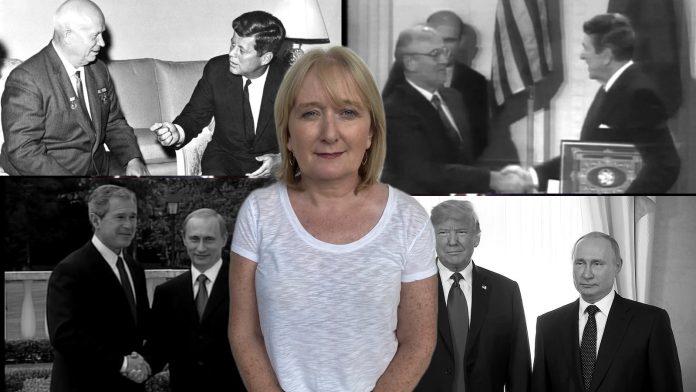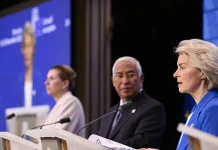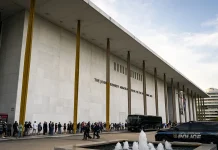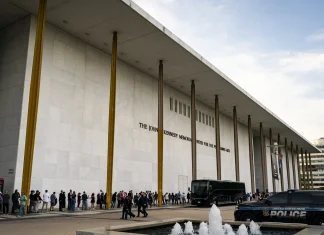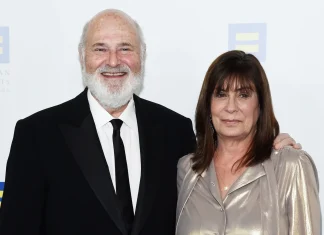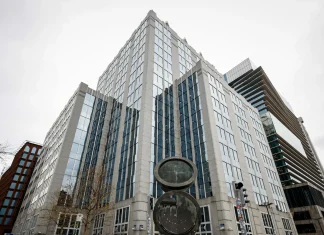When Titans Meet: The Enduring Dance of U.S.-Russia Summits
In the icy vastness of Alaska, a new chapter is poised to be written in the long saga of U.S.-Russia relations. Imagine the scene: two leaders, emblematic of colossal powers that have shaped the modern world, sitting across the room, eyes locked, words measured—but beneath the polite veneer, history hums. This isn’t just a meeting. It’s a ritual, a ceremony carved from decades of tension, diplomacy, suspicion, and sometimes, unexpected camaraderie.
The Weight of History in Every Handshake
Since the 1940s, when the world was freshly scarred by the fires of World War II and on the brink of a long chill war, American presidents and Soviet premiers have come together more times than anyone can easily count. Each summit reflects the complex and often fraught relationship between two superpowers, their conflicts and convergences rippling far beyond their borders.
“Every summit is a story,” reflects Dr. Elena Morozova, a Russian historian specializing in Cold War diplomacy. “It’s a delicate dance of power and persuasion. Each handshake, each smile or frown carries messages heavier than spoken words.”
Think of the 1945 meeting between Franklin D. Roosevelt, Winston Churchill, and Joseph Stalin at Yalta, where the post-war world order was hammered out on the backs of millions. The Helsinki Accords of 1975 symbolized a rare détente, cautiously optimistic. And, in more recent memory, the 1985 meeting between Ronald Reagan and Mikhail Gorbachev in Geneva marked the thaw that would eventually melt the Iron Curtain.
Alaska: Where Nature Meets Politics
Against this backdrop, the choice of Alaska as the venue for the latest summit between President Donald Trump and President Vladimir Putin holds symbolic weight. Alaska, the farthest American frontier, with its sweeping glaciers and rugged wilderness, is not just a picturesque setting but a subtle reminder of the tenuous proximity—and rivalry—between the two nations.
“Alaska is like a natural sentry at the edge of the continent,” says Marina Petrov, a Tukchi cultural expert from the Chukotka region just across the Bering Strait. “For indigenous peoples here, the meeting is almost surreal—old enemies coming together on lands where our ancestors moved freely across ice and sea.”
At a glance, the serene snowfields evoke an illusion of calm, but political icebergs lurk beneath the surface.
Why Do We Watch? More Than Politics
You may ask, why does such a meeting captivate global attention? Because it is more than high-stakes political maneuvering; it’s a window into the broader narratives shaping our world.
- Security and Stability: The outcomes of these summits have shaped everything from nuclear arms control to cyber warfare policies.
- Geopolitical Influence: The ebb and flow between cooperation and competition reverberate across continents—from the Middle East to Eastern Europe.
- Human Stories: Behind the grand narratives are millions whose lives are touched by these high-level decisions—immigrants, soldiers, activists, and everyday citizens.
James Carter, a retired U.S. diplomat, puts it simply: “When these leaders meet, it’s about the future none of us can ignore.”
The Dance of Words and Silence
Summits often oscillate between public declarations and hushed back-channel discussions. The media frenzy can drown out nuances—subtle shifts in tone, the way a pause lingers just long enough to signal skepticism or conciliation.
“It’s a game of chess, not checkers,” notes political analyst Svetlana Kuznetsova. “Sometimes the loudest moments are silences. What’s not said can matter as much as what is.”
For instance, negotiations over arms reduction agreements or cyber-security pacts often happen behind closed doors, away from cameras and headlines. Yet these quiet moments shape the course of international relations dramatically.
What Lies Beneath the Surface?
Beyond the immediate demands of diplomacy, these meetings hint at the larger questions facing the world: Can longstanding rivalries evolve into mutual respect? How do historical wounds affect contemporary policy? And most importantly, how do two powers, with their clashing ideologies and global ambitions, find common ground?
In the digital age, where information moves at lightning speed and public opinion sways like a mariner’s compass in a storm, the stakes are higher than ever. Transparency and mistrust collide, and the outcomes of these encounters ripple globally—affecting economies, alliances, and even the environmental policies that dictate our planet’s fate.
A Moment to Reflect
As we watch these leaders gather—whether in the vast wilderness of Alaska or some glittering global capital—we are reminded of the enduring complexity of human relationships, be they personal or geopolitical. How do two countries so intertwined yet so divided continue to talk, negotiate, and sometimes cooperate? What lessons might we, as individuals or societies, draw from their efforts?
Perhaps it is this: real dialogue is hard. It requires courage to face deep-seated fears and histories. It demands patience and the willingness to look beyond immediate gains toward a shared future.
To Our Readers
Next time you hear of a summit between world leaders, think not just of policies and posturing, but of the human stories nestled within—of cultures meeting, of tensions and hopes intertwined. How might their conversations shape the world you live in? And more personally, in what ways can the resilience, challenge, and hope embedded in these political dances inspire your own encounters with difference, conflict, and cooperation?
As the world watches Alaska this time, the questions remain: What messages will be exchanged in tones both spoken and silent? And how will the echoes of this meeting reverberate far beyond the frozen ground beneath?
In the end, history is watching. And so are we.


